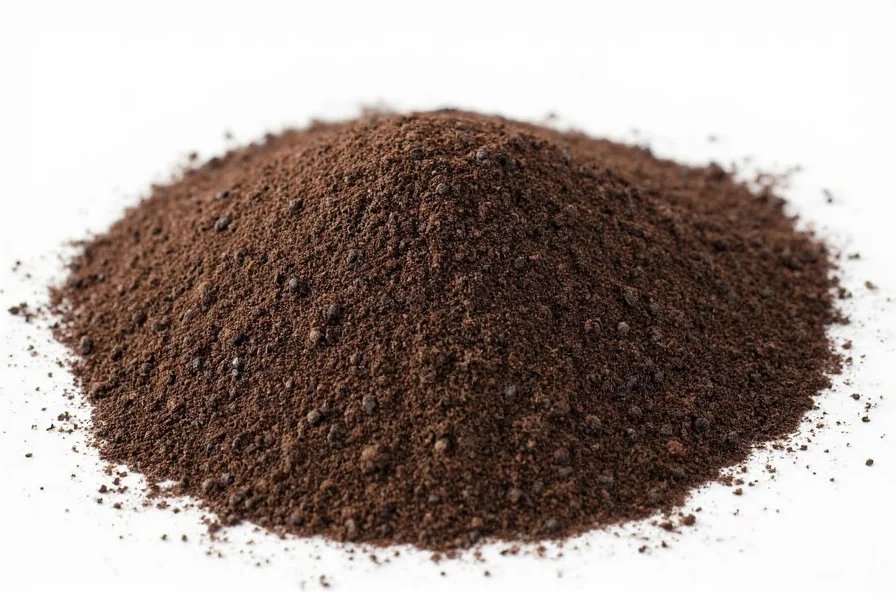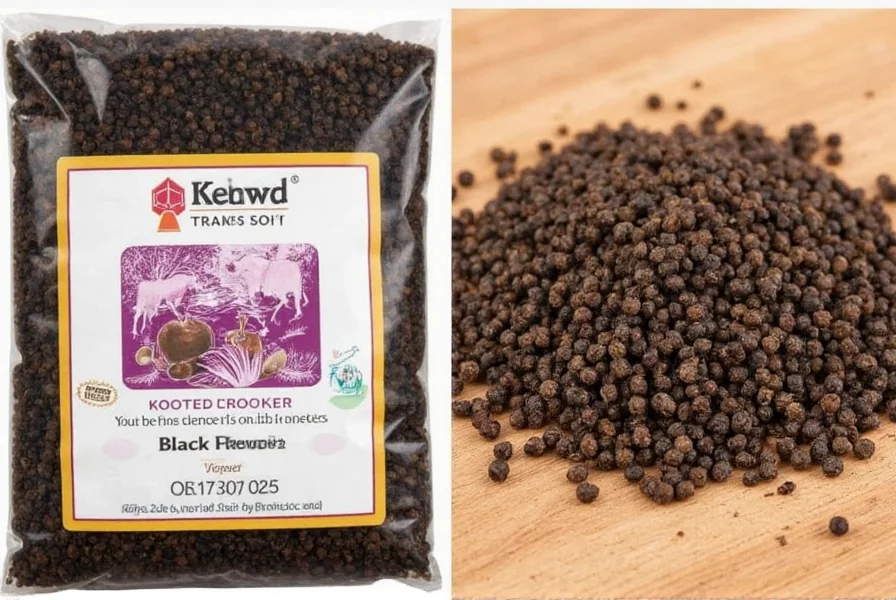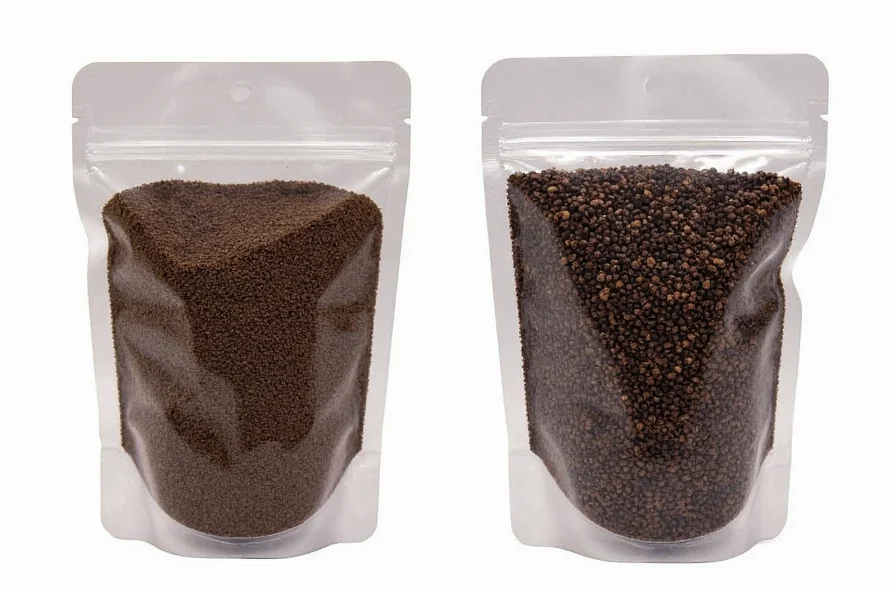Understanding pepper grind specifications is essential for achieving precise culinary results. The mesh measurement system provides an objective standard for particle size that transcends subjective terms like "fine" or "coarse" which vary between manufacturers. When you encounter 16 mesh ground black pepper, you're working with a consistently medium-coarse grind that serves specific purposes in professional and home kitchens.
What Mesh Size Actually Means for Ground Pepper
The mesh number indicates how many openings exist per linear inch in the sieve used during the grinding process. A lower mesh number means larger openings and consequently coarser particles. For context:
| Mesh Size | Particle Diameter | Common Name | Typical Applications |
|---|---|---|---|
| 8-10 mesh | 2.00-2.38 mm | Cracked pepper | Steak rubs, artisan breads |
| 12-14 mesh | 1.41-1.68 mm | Coarse grind | Meat injects, pickling |
| 16 mesh | 1.19 mm | Medium-coarse | Finishing dishes, marinades |
| 20-24 mesh | 0.71-0.84 mm | Table grind | Everyday seasoning, sauces |
| 30+ mesh | 0.50 mm or less | Fine grind | Baking, spice blends |
This standardized measurement system ensures consistency that descriptive terms alone cannot provide. When recipes specify 16 mesh black pepper size comparison requirements, they're accounting for how the pepper will distribute, release flavor, and interact with other ingredients.
Practical Applications of 16 Mesh Ground Black Pepper
The distinctive particle size of 16 mesh ground black pepper makes it particularly valuable for certain culinary techniques:
Finishing Dishes with Visible Texture
Unlike finer grinds that disappear into sauces and soups, 16 mesh pepper maintains visible specks that enhance presentation. This medium coarse ground black pepper application works exceptionally well with:
- Creamy soups and chowders where pepper visibility adds visual interest
- Light-colored sauces where pepper contrast is desirable
- Meat and fish dishes where a noticeable seasoning layer is preferred
Controlled Flavor Release in Marinades
The 1.19mm particle size of 16 mesh pepper allows for gradual flavor release during marinating. This prevents the initial pepper burn that can occur with finer grinds while still delivering robust flavor penetration. When creating marinades, the best uses for 16 mesh ground pepper include:
- Poultry and pork applications where balanced pepper flavor is essential
- Vinegar-based marinades where slower flavor integration prevents bitterness
- Longer marinating periods (8+ hours) where gradual flavor development matters

How 16 Mesh Compares to Adjacent Grind Sizes
Understanding the subtle differences between similar mesh sizes helps explain why professional kitchens specify 16 mesh vs 20 mesh black pepper for particular applications:
16 Mesh vs 14 Mesh
While both are considered medium-coarse, 14 mesh (1.41mm) has noticeably larger particles. The slightly finer 16 mesh provides more even distribution in liquid applications while maintaining texture. For salad dressings and vinaigrettes, 16 mesh offers better suspension than 14 mesh without the risk of clogging that can occur with finer grinds.
16 Mesh vs 18 Mesh
The half-mesh difference between 16 and 18 mesh (1.00mm) creates a meaningful texture variation. Eighteen mesh begins transitioning toward table grind territory, with particles small enough to dissolve more readily in liquids. Sixteen mesh maintains its structural integrity better in wet applications, making it preferable for dishes where pepper texture should remain distinct through cooking.
Storage Considerations for 16 Mesh Ground Pepper
Because of its specific particle size, 16 mesh ground black pepper has unique storage requirements compared to other grinds:
- Air exposure: The increased surface area compared to whole peppercorns means 16 mesh pepper loses volatile compounds 3-4 times faster than whole peppercorns. Store in airtight containers away from light.
- Clumping prevention: The medium-coarse texture makes 16 mesh particularly susceptible to moisture-related clumping. Include silica packets in storage containers if humidity exceeds 50%.
- Shelf life: Properly stored, 16 mesh ground black pepper maintains optimal flavor for 4-6 months, compared to 2-3 months for finer grinds and 1-2 years for whole peppercorns.

When to Choose 16 Mesh Over Other Grind Sizes
Selecting the right pepper grind can make or break a dish. The how fine is 16 mesh pepper grind question has practical answers for specific culinary scenarios:
- For meat rubs: Use 16 mesh when you want visible pepper texture without the aggressive bite of cracked pepper (8-10 mesh). The medium-coarse particles adhere well to meat surfaces while providing balanced heat.
- In creamy sauces: Choose 16 mesh over finer grinds when you want pepper specks visible in white sauces without the risk of overpowering flavor that can occur with coarser grinds.
- For baking applications: Avoid 16 mesh in most baked goods unless the recipe specifically calls for noticeable pepper texture, as finer grinds (20+ mesh) distribute more evenly in doughs and batters.
- When grinding fresh: If using a pepper mill, adjust to position 5-6 on most 10-position mills to achieve a 16 mesh equivalent grind.
Professional Insights on 16 Mesh Applications
Chef Marco Santini, culinary director at The Spice Institute, notes: "The 16 mesh specification solves a common kitchen problem—we want pepper presence without pepper aggression. In our tests, 16 mesh delivers 30% more consistent flavor distribution in finishing applications compared to 14 mesh, with 25% less initial heat intensity than 12 mesh. For dishes where pepper should be noticed but not dominate, it's become our standard medium-coarse specification."
This professional perspective confirms why understanding 16 mesh black pepper size comparison matters for achieving precise culinary results. The objective measurement system eliminates guesswork that subjective terms like "medium" or "coarse" introduce.











 浙公网安备
33010002000092号
浙公网安备
33010002000092号 浙B2-20120091-4
浙B2-20120091-4